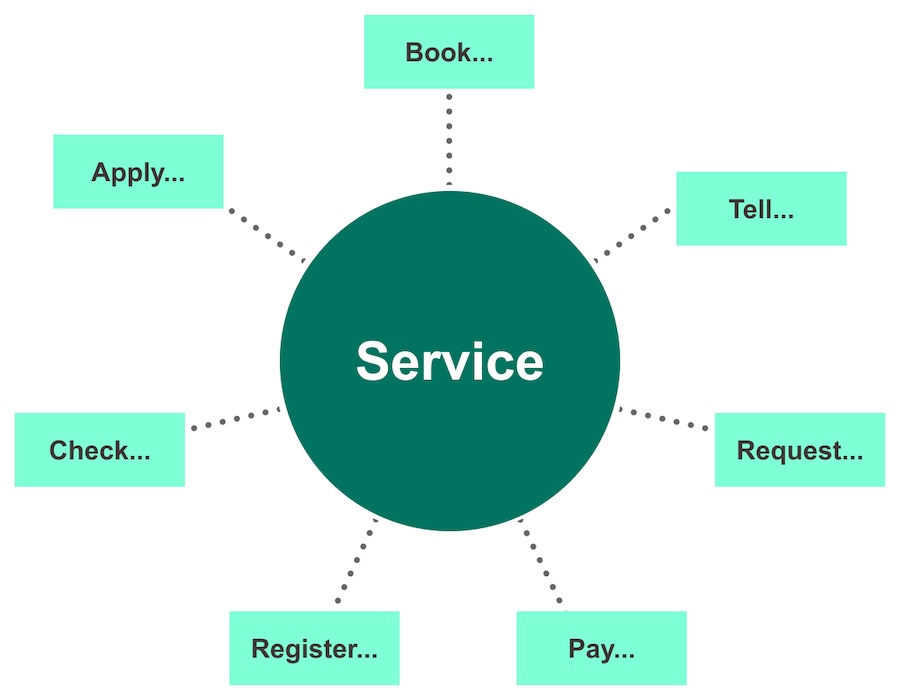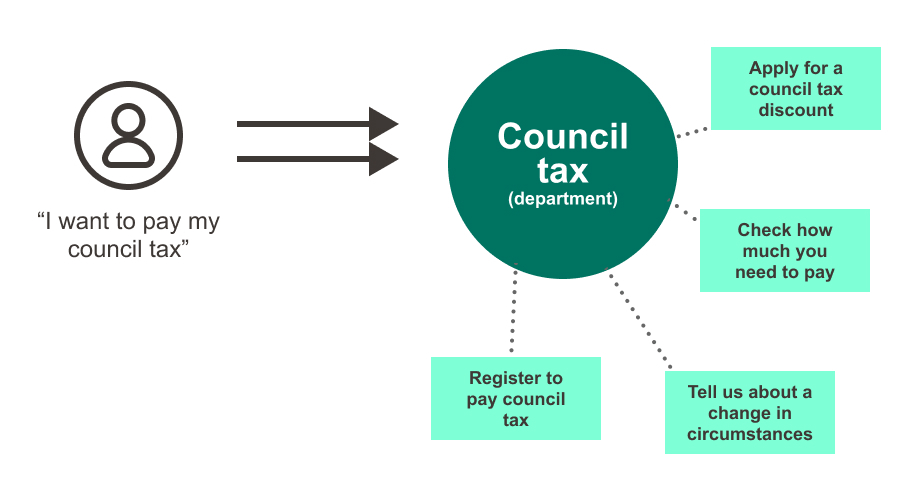Overview
Many organisations think about services based on their internal structures, teams or departments. For example, you may think of council tax, parking and permits or social care as separate services.

But users do not experience services that way.
When we talk about services here, we mean what the user is trying to do, not your structure. For example, your council tax service could include:

A single task from the perspective of your users (like ‘paying your council tax’) might involve multiple parts of your organisation.
Understanding your service from the user’s point of view helps you design something that works in the real world.
Learn more about mapping and understanding your current service.
Learning about your users
To design a good service, you need to understand the people it’s for. This means learning about what they’re trying to do, what gets in the way and what matters to them.
This helps you:
- focus on the right problems
- design things that work in practice
- meet the needs of the people who rely on you the most
Learning about your users starts with curiosity, empathy and a willingness to listen. You can start with what’s already available to you:
- support tickets and complaints
- conversations with frontline staff
- simple journey maps
- feedback or analytic reviews
Sketch out a user journey, test your ideas, even in small ways, and ask yourself:
- how people find the service
- what they try to do
- what steps they take
- where they get stuck
- what happens behind the scenes
Learn about understanding your users and testing your services.
Understanding Welsh-language users
In Wales, services must work equally well in Welsh and English. This is to meet user needs and comply with Welsh language standards.
Welsh-language users are diverse. Some prefer to use Welsh services, others switch between languages and some use assistive technology. Everyone benefits from clear, simple Welsh (Cymraeg Clir).
Designing bilingually from the start prevents problems with translations, including:
- poor experience for Welsh-language users
- higher costs
- duplicated efforts
Preparing your team for bilingual design
You may not have bilingual people in your team, but you can still plan for bilingual design. Some things you could do include:
- assessing the Welsh-language skills in your team
- asking early for support from translators or other specialists
- setting realistic expectations about what you can deliver
- avoiding overloading Welsh speakers who support multiple projects
Planning early helps your team work better and gives users and staff a better service.
Working with stakeholders
Stakeholders are users too, especially those who help design or deliver the service. This could include:
- policy and legal teams
- operations and communications teams
- analysts and senior leaders
Involving them early helps build trust, uncover risks and agree what needs to change. It also helps you understand how decisions get made and who does what.
You can involve them by inviting them to:
- co-design workshops
- regular team sessions
- stand-ups, reviews and other agile ceremonies
Many won’t be familiar with user-centred or agile ways of working. Be clear and straightforward about what you’re doing and why.